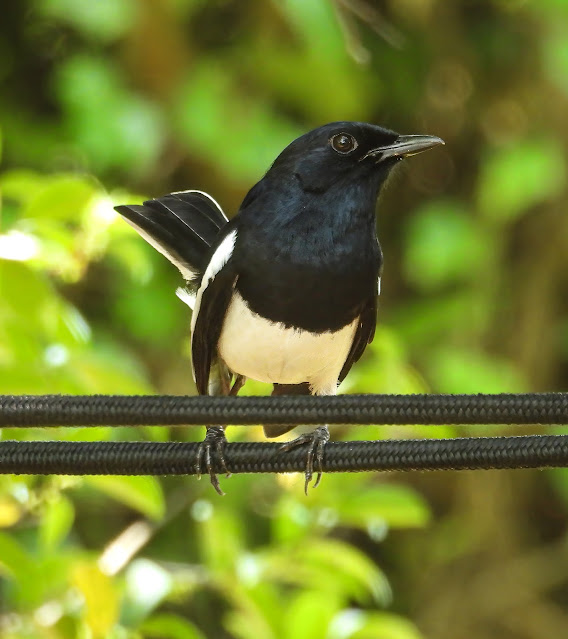The Oriental magpie-robin (Copsychus saularis ) is a small passerine bird that was formerly classed as a member of the thrush family Turdidae, but now considered an Old World flycatcher. These birds are particularly well known for their songs and were once popular as cagebirds.
The Oriental magpie-robin is 19 cm (7.5 in) long, including the long tail, which is usually held cocked upright when hopping on the ground. It is similar in shape to the smaller European robin, but is longer-tailed. The male has black upperparts, head, and throat apart from a white shoulder patch. The underparts and the sides of the long tail are white. Females are greyish black above and greyish white. Young birds have scaly brown upperparts and heads.
Oriental magpie-robins are resident breeders in tropical southern Asia from Nepal, Bangladesh, India, Sri Lanka, and eastern Pakistan, eastern Indonesia, Thailand, south China, Malaysia, and Singapore. They inhabit open woodlands, mangroves, and cultivated areas often close to human habitations.
Oriental magpie-robins breed mainly from March to July in India and January to June in south-east Asia. Males are quite aggressive during this time and defend their territory; they respond to the singing of intruders and even their reflections. Males sing from high perches during courtship. The display of the male involves puffing up the feathers, raising the bill, fanning the tail, and strutting. Oriental magpie-robins nest in tree hollows or niches in walls or buildings, often adopting nest boxes. They line the cavity with grass. The female is involved in most of the nest building, which happens about a week before the eggs are laid. She then lay 4 to 5 eggs at intervals of 24 hours and these are oval and usually pale blue-green with brownish speckles that match the color of hay. The eggs are incubated by the female alone for 8 to 14 days. Both parents take part in raising their chicks which remain in the territory until the next breeding season.

